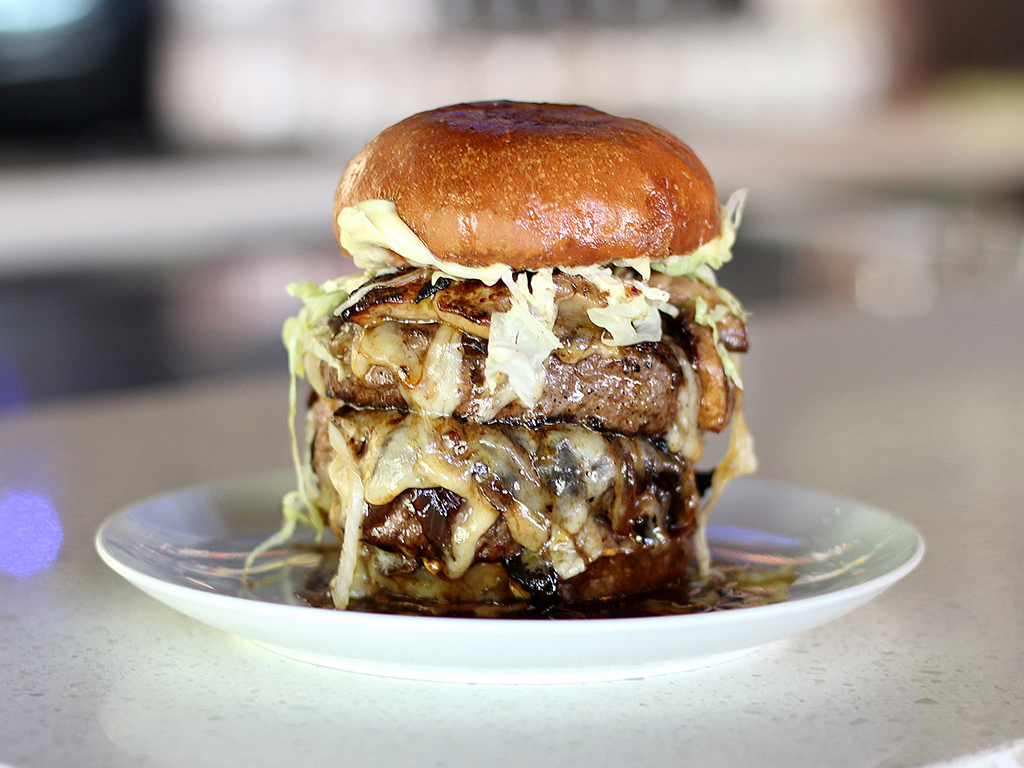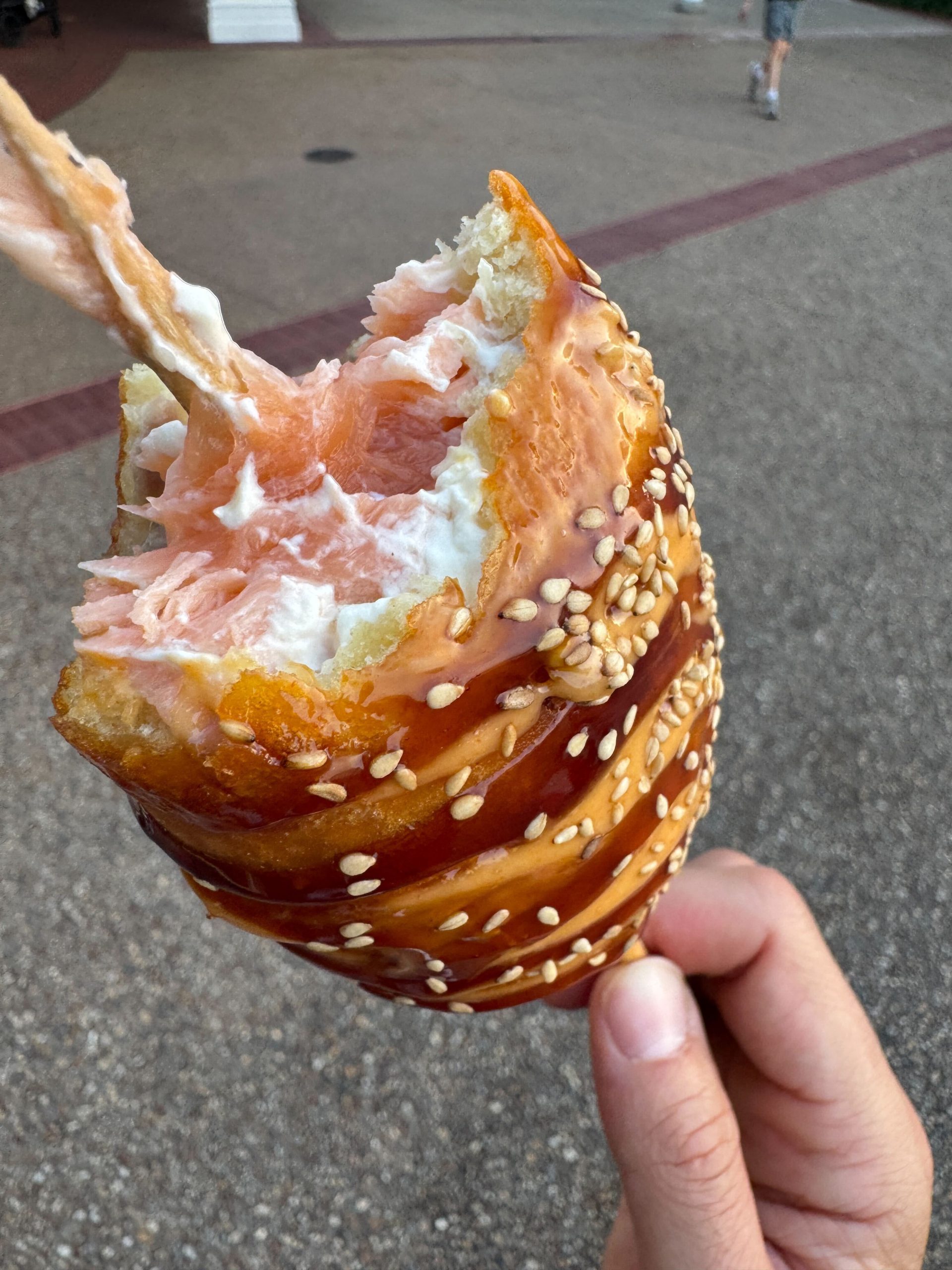How PETA Unconsciously Fed Our Craving for Foie Gras

We are the generation that if people tell us, “That’s wrong” or “You shouldn’t do that,” our response is usually something like, “F**k you. I’ll do what I want. In fact, I’m going to do it even more and post a bunch of memes about it.”
So when PETA started telling Californians that the production of foie gras is inhumane, so much so that it was legally banned in 2012, people suddenly craved foie gras a little more.
“The human mind is predisposed to explore the forbidden,” says Professor Marc David, founder of the Institute for the Psychology of Eating. “Meaning, when Adam and Eve were told to not eat the apple, what’s the first thing they did?”
We’re all familiar with PETA as they walk the streets butt-ass-naked or picket outside restaurants in protest of whatever animal-related beef fits the day. Some feel their tactics have proven to be effective in the same way the Westboro Baptist Church is effective in making everyone feel like filthy sinners, while others watch PETA’s videos and actually feel something.
The negative backlash, at least for PETA, is that people don’t like being told they’re doing something wrong, which means PETA’s messages sometimes go in one ear, out the other, onto a frying pan and into our stomachs.
“The more negative attention a food receives, the more we want to know what actually might be good about it.” – Marc David, Professor of Food Psychology
Now, let’s back up a little bit. I won’t get into the whole ethical debate of foie gras, but as far as PETA’s perspective, they hit everyone with the harsh realization that the birds used for foie are force-fed in a pretty grotesque-looking manner, as shown below:

Screen Grab Becoming Madame
While PETA and other animal rights groups fought tooth-and-nail to make the sale of foie gras illegal, they inadvertently dramatically boosted the demand for this fatty duck liver.
In the culinary world, foie gras is a French delicacy, and although popular, it was never really something people begged for, until people heard it would become illegal.
“The worst thing that PETA did for foie gras was tell us we shouldn’t eat it,” Chef Jason Quinn said. “There’s nothing you could have done that would make people want it more, than that.”
Chef Jason Quinn owns Playground restaurant in Santa Ana, California, and was one of the chefs who had PETA breathing down his neck after he had a huge foie gras event back in June of 2012. He put pieces of foie gras on his double-meat patty Playground Burger and served it to hungry customers who tiptoed around PETA’s army of picketers to get through the door.
“The last day of legal foie gras sales, we sold 38 pounds… in 2-ounce portions. That’s over 250 dishes of foie gras,” Quinn said. “It is still, to this day, our highest record sales.”
Before the talk of a foie gras ban, Quinn said he couldn’t even sell two lobes of foie over a weekend. As soon as the controversy caught waves in the media, foie starting selling like a Taylor Swift album.
Foie gras isn’t a dish made for mass production in the same way chicken or beef is, so that type of demand is pretty insane. There are only three foie gras production farms in the entire United States. One of those farms, La Belle Farms in New York, produces about 130,000 ducks a year. Compare that to a single Foster Farms facility in Louisiana that cranks out 1.3 million chickens a week. Just a small example to show how much of a delicacy it is. Plus, it’s expensive as hell for what you’re getting. For upward of $20, you’ll get maybe four or five good bites out of a plate of foie.

PicThx La Toque
Granted, those with an educated tongue, a lot more educated than mine, believe those five bites to be greatly delicious bites, but it’s not something you’d order regularly, unless someone explicitly tells you not to.
“A lot of people haven’t had it and all of a sudden this raises the interest level,” says Dr. Brian Wansink, professor of marketing at Cornell University and author of Slim by Design. “Before it was, ‘Whatever, I have no interest,’ but then, ‘It’s gonna be banned! It’s illegal!’ and it raises the interest quite a bit.”
Lindsay Rajt, associate director of campaigns for PETA, holds that the California ban on foie did not create a higher demand and Americans are still generally outraged by the production of it.
“It’s a ludicrous claim for a chef to make, or anyone to make. Most Americans oppose cruelty to animals and as soon as you describe to them what foie gras is and how it’s made, they’re absolutely repulsed.” – Lindsay Rajt
Rajt added that because 77 percent of Americans believe force-feeding ducks and geese for foie gras should be banned, the higher demand isn’t something that’s truly legit.
That remaining 23 percent that gives “zero f**ks” about where their foie is coming from must have a pretty strong base. Just ask Chef Ken Frank of La Toque in Napa Valley, California, who’s been all over the news, singing the praises of foie gras and dancing with joy that the ban was overturned January 7.
“I have heard from many people that would not ordinarily try Foie Gras who have eaten it because they support the right to choose what we eat.”-Chef Ken Frank
He’s been fighting for foie for a while now. He even held a contest in 2014 where essay writers could win a chance to hear him speak and eat some free foie gras:

The overwhelming number of hungry foie eaters led to this response two days later:

Some restaurants still offered foie gras after the 2012 ban; they just didn’t sell it, they gave it away. Take that, authority. There was still a demand for foie in California and chefs found loopholes in the system. It was almost like bootlegging in the 1920s, except it technically wasn’t a violation of the law.
Now it’s legal again and restaurants are getting creative, even throwing it on hot dogs and ice cream.
At this point it’s hard to tell what people like less, seeing animals get tubes shoved down their throats, or being told they can’t do something. PETA’s going to keep picketing and trying to change laws, but it’s probably going to keep falling on deaf ears because ‘Muricans don’t like being pushed, not even a little bit.
You can’t help but feel this foie gras fight backfired on PETA. Not only did the ban get repealed, but people were still eating it while the ban was in effect.
The truth is, the only way PETA would really get people’s attention would be if foie gras, chicken wings and porterhouse steaks stopped being delicious. Good luck with that.
Main PicThx Phillip Reardon






















